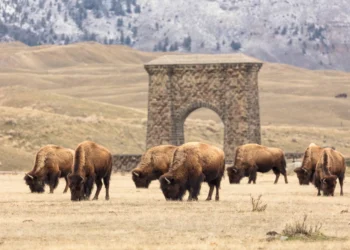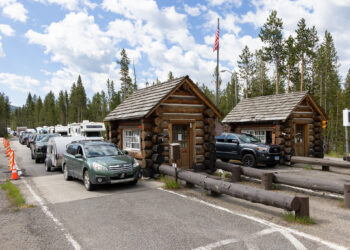BOZEMAN – Concerned about threats to whitebark
pine, members of the Greater Yellowstone Coordinating Committee on March 31
signed the Whitebark Pine Strategy for the Greater Yellowstone Area.
Whitebark pine is currently threatened by insects and diseases.
Impacts from non-native white pine blister rust and native mountain pine
beetle, combined with the effect of altered temperature patterns on beetle
population dynamics, have resulted in significant loss of whitebark pine in
the Greater Yellowstone Area.
“We recognize that the only way for us to
address this issue is through interagency collaboration,” said GYCC chair Steve Kallin. “We have to treat
this problem holistically – it’s a landscape-scale problem. The bugs and
rust don’t stop at an invisible agency boundary.”
Whitebark pine is considered a foundation species of high-elevation
ecosystems in the Greater Yellowstone region. It grows on harsh sites at high elevation and occurs
on about 10 percent of the 24-million-acre area. Whitebark pine is an
important species for a number of reasons.
– Once colonized, it improves conditions on otherwise inhospitable
sites so other plants can grow, increasing biodiversity.
– It provides shelter and cover for wildlife and its large, nutritious
seeds are an important food source for birds, squirrels, bears, and
other mammals.
– It helps capture and retain snow, increasing the amount and duration
of snowmelt in the summer.
The strategy establishes management objectives, sets priorities, and
describes coordination efforts for the agencies that manage public lands in
Yellowstone and Grand Teton National Parks, Red Rock Lakes and National Elk
Refuges, and the Bridger-Teton, Caribou-Targhee, Custer, Beaverhead-
Deerlodge, Gallatin and Shoshone National Forests.
The culmination of five years of work by professional
ecologists, foresters, and wildlife biologists in the region, the strategy was
developed with collaboration among these agencies as well as others
with an interest in whitebark pine.
Sites proposed for protection and restoration will be prioritized according
to criteria outlined in the strategy.
Recognizing the importance of whitebark in the Greater Yellowstone, the GYCC formed the
Whitebark Pine Subcommittee in 2000. In 2006, as whitebark mortality
increased, the committee worked to map the distribution and mortality of
whitebark and develop a management strategy to maintain whitebark on the
landscape in the GYA.
The strategy demonstrates the commitment of every land
manager in the region to addressing the precarious condition of whitebark in
this ecosystem, Kallin says. “We recognize that actions taken on any jurisdiction affect
the long-term status of this important species throughout the [area].”
The Committee was also the recipient of a 2012 Arbor Day Award, in honor of its contribution to tree planting, conservation and stewardship, the Arbor Day Foundation announced this week.
The Montana, Wyoming and Idaho-based Greater Yellowstone Whitebark Pine Committee is one of 16 individuals and organizations being recognized by the Foundation at the annual Arbor Day Awards, in Nebraska City, Neb., on April 28.













